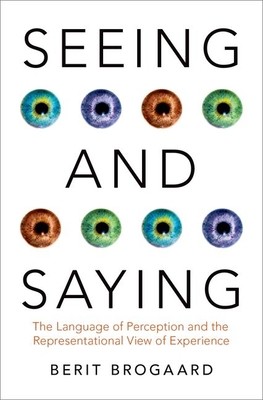
- We will send in 10–14 business days.
- Author: Berit Brogaard
- Publisher: Oxford University Press, USA
- ISBN-10: 0190495251
- ISBN-13: 9780190495251
- Format: 16 x 23.9 x 2 cm, kieti viršeliai
- Language: English
- SAVE -10% with code: EXTRA
Reviews
Description
Imagine you are sitting at Starbuck glancing at the blue coffee mug in front of you. The mug is blue on the outside, white on the inside. It's large for a mug. And it's nearly full of freshly made coffee. In the envisaged case, you see all those aspects of the scene in front of you, but it remains a question of ferocious debate whether the visual experience that makes up your seeing is a direct "perceptual" relation between you and your environment or a psychology state that has a content that represents the mug. If your experience involves an external "perceptual" relation to an external, mind-independent object, it is unlike familiar mental states such as belief and desire states, which are widely considered psychological states with a representational content that stands between you and the external world. Your belief that the coffee mug in front of you is blue has a content that represents the coffee mug as being blue. Your desire that the coffee in the mug is still hot has a
content that represents a state of affairs that may or may not in fact obtain, namely the state of affairs that the coffee in the mug is still hot.
EXTRA 10 % discount with code: EXTRA
The promotion ends in 21d.15:19:05
The discount code is valid when purchasing from 10 €. Discounts do not stack.
- Author: Berit Brogaard
- Publisher: Oxford University Press, USA
- ISBN-10: 0190495251
- ISBN-13: 9780190495251
- Format: 16 x 23.9 x 2 cm, kieti viršeliai
- Language: English English
Imagine you are sitting at Starbuck glancing at the blue coffee mug in front of you. The mug is blue on the outside, white on the inside. It's large for a mug. And it's nearly full of freshly made coffee. In the envisaged case, you see all those aspects of the scene in front of you, but it remains a question of ferocious debate whether the visual experience that makes up your seeing is a direct "perceptual" relation between you and your environment or a psychology state that has a content that represents the mug. If your experience involves an external "perceptual" relation to an external, mind-independent object, it is unlike familiar mental states such as belief and desire states, which are widely considered psychological states with a representational content that stands between you and the external world. Your belief that the coffee mug in front of you is blue has a content that represents the coffee mug as being blue. Your desire that the coffee in the mug is still hot has a
content that represents a state of affairs that may or may not in fact obtain, namely the state of affairs that the coffee in the mug is still hot.


Reviews